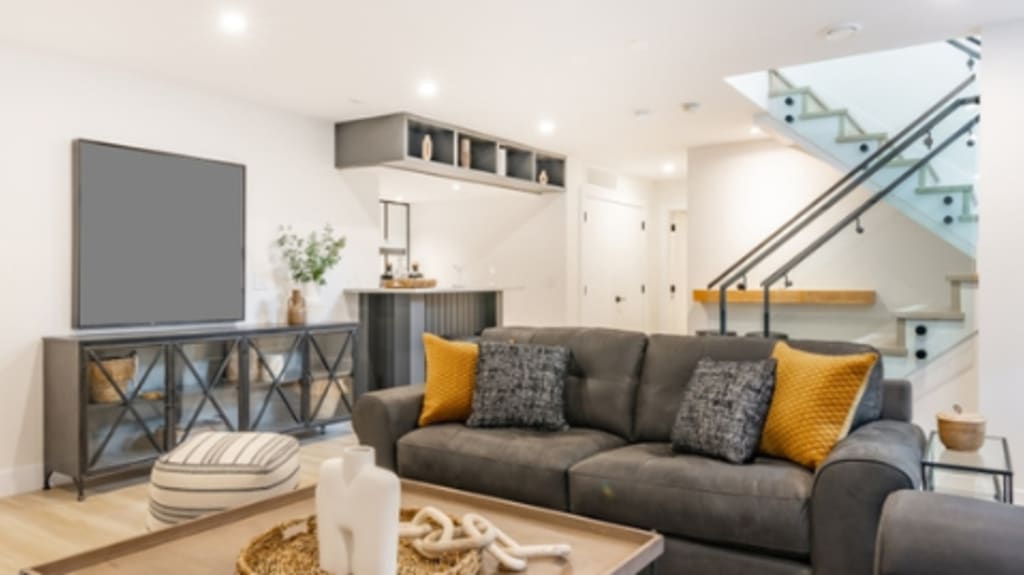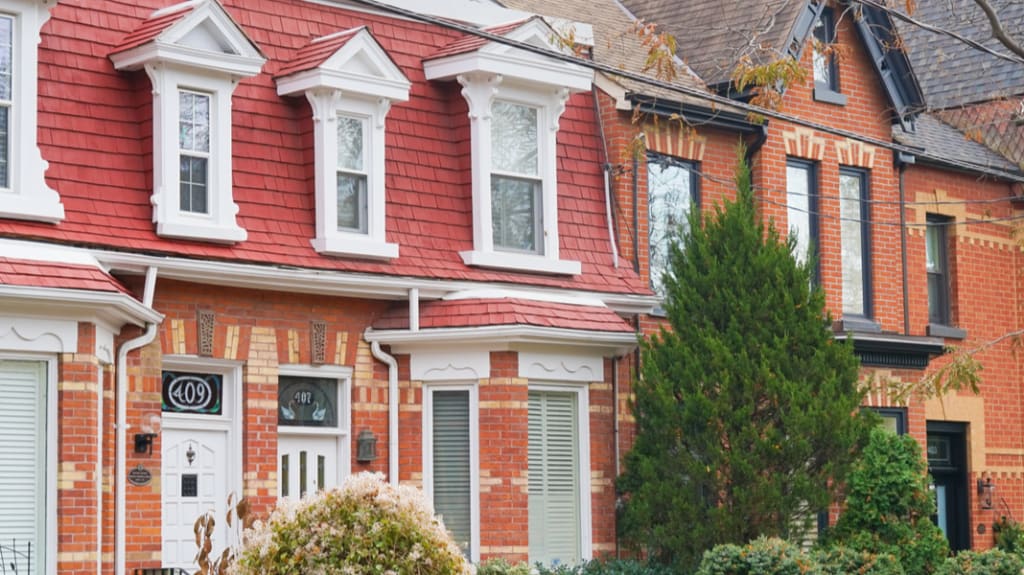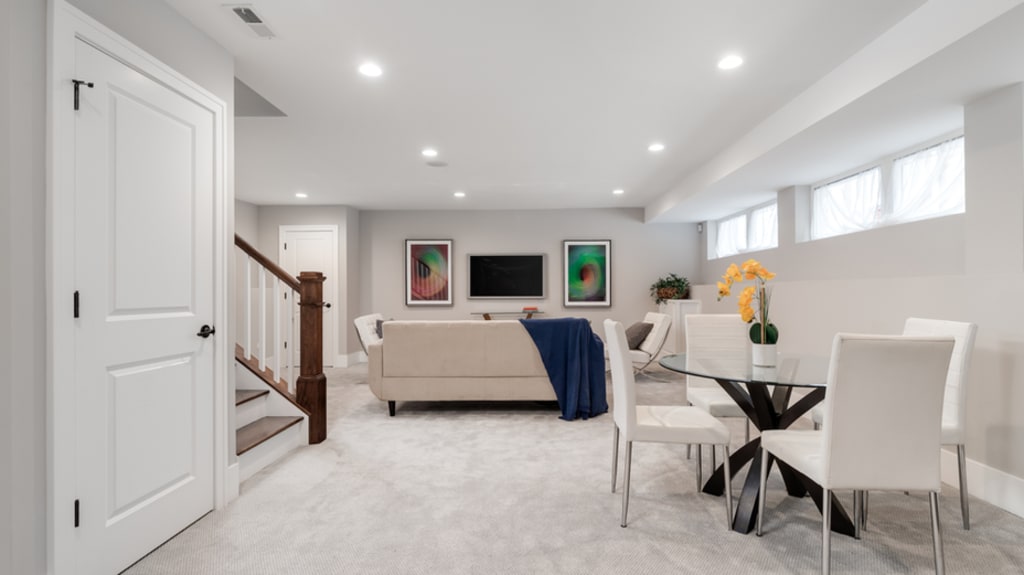Creating a well-lit basement can be as easy as flicking a switch. Whether your dream basement includes a relaxing home theatre, a private living area, or something else entirely, selecting the right lighting is important. Here are some bright basement lighting ideas to help you prepare for your basement renovation.
Choosing the right basement lighting
To create a basement that suits your needs, you will need to choose basement lighting that works with you, not against you. Not sure where to begin? Consider a few important factors before picking out your basement light fixtures.
Purpose of the basement
The first step is knowing how you would like to use the space. What would you like to do in your basement? What lighting would best facilitate it? For example, low ambient lighting is a great choice for home theatres or relaxation areas, but it won’t provide enough illumination for an art studio or home office. Once you know the purpose of your space, you can pick the best lighting for the job.

Ceiling height and layout
The right basement lighting choices can ensure that no matter its size, height, or layout, your basement feels just right to you. Install semi-flush mount track lights to make a low-ceiling basement appear vast and spacious. Alternatively, take advantage of a higher ceiling with a stylish chandelier or pendant light that draws the eye upward and opens up the space.

Personal style and preferences
Make your basement your own with lighting that shows off your space and your taste. For example, if you like the industrial look of your unfinished basement, then consider complementing it with industrial-style lighting. Check out the latest basement trends for basement lighting ideas that match your aesthetic.

Energy efficiency
To brighten your space while consuming less energy, opt for LED or CFL bulbs over incandescent. Dimmers are another easy way to implement sustainability into any lighting you choose for your basement since you can adjust the intensity of the light however you like.

Types of basement lighting
There are multiple types of lighting you can use to light up your basement. If you want to get the most out of your space, it’s important to know the difference and select your fixtures accordingly.
Ambient lighting
This kind of lighting is designed to fill your basement with a warm, inviting glow the moment you turn on the light switch. The point is to diffuse light throughout the entire room, instead of highlighting more focused spaces.

Task lighting
True to their name, task lights provide bright, focused light right where you need it most. Select these lights with your desired tasks in mind. This could look like pendant lights hung over the bar, reading lamps by the sofa, or spotlights illuminating a workspace from above.

Accent lighting
Ideal for adding a personal touch to your basement, this type of lighting can be used to highlight unique features, accentuate built-in shelving, or set a particular mood. This could be as simple as underlighting your basement stairs or hanging a small fixture over your favourite artwork. Your imagination is the only limit!

Popular basement lighting options
With so many options out there, making decisions about your basement lighting may feel like an overwhelming task. To help you choose the best lighting for your space, here are some of the most popular basement lighting options.
Recessed lighting
Recessed lights are a popular choice for basement lighting. They shine light down from the ceiling, where they are tucked out of the way. Several options are available, from smaller pot lights to bigger, more central ambient lights. Their focused light makes them a good pick for seating, dining, and crafts areas. They’re also a fan favourite for games rooms: they aren’t easily damaged by errant game props like ping pong balls.

Track lighting
These movable lights are attached to a sturdy metal or wire track and can be easily adjusted. They make excellent task lighting, as each track light can be swivelled to direct light where it is needed the most. A track of spotlights, for example, can brighten up a dark hallway or create a gallery-like effect for a collection of wall art.

Tray ceiling lighting
Unique architectural features like recessed ceilings (or tray ceilings) need a combination of ambient lighting solutions to create the perfect moody and relaxing atmosphere. Track and recessed lighting solutions are a good bet. With some strategic positioning, you’ll be able to both hide wiring and let gentle light filter down into your basement. Reach out to a skilled contractor if you want to build a soffit.

Pendant lighting
If you’re looking to add a bit of elegance, then you’re in the right place. Pendant lights drop from the ceiling and can provide ambient, task, or accent lighting depending on the design. Try hanging one with a clear glass shade over a desk to add functionality and fashionable flair to your basement office.

Chandeliers
Struggling to express your style in a space with a higher ceiling? Think chandeliers! They hang from the ceiling like pendant lights and provide lighting from many smaller light sources. Try hanging one over a dining or game table for elegant task lighting that adds texture to your space.

Sconce lighting
Stylish, functional… What’s not to love? Sconces are attached to your basement walls and can be turned on and off with a switch. Point them toward the ceiling for moody lighting that’s perfect for your home theatre. Alternatively, point them downwards for task lighting on a table or desk. It’s a versatile option that can fit any décor style!

Floor lamps
Looking for flexibility in your lighting options ? Consider a floor lamp. These individual lights can be placed anywhere you like, as long as they can reach an outlet. They also let you direct light wherever you need it. They’re not only a practical basement lighting solution but also an affordable one. You can add a touch of style without breaking the bank.

Table lamps
Table lamps are a great option for those who crave flexibility and cost-efficiency. They’re perfect for small spaces where floor lamps may not fit. If you’re working in your basement, a table lamp can provide adjustable task lighting. And, if you’re reading on the couch, it’s the perfect reading light. Consider adding one or two to your basement lighting plans.

Choosing a light bulb
When it comes to basement lighting, there are plenty of light bulb options at your disposal. Don’t be afraid to get creative with your choices! With the right bulbs, you can transform your space into a cozy, inviting escape. So go ahead, experiment and find the perfect fit for your basement’s unique style.
Incandescent. The original bulbs, incandescent lights produce a bright, warm light. They aren’t very energy efficient and are expensive for how long they last.
LED. These produce a lot of light while consuming very little energy. LEDs are available in many different styles and temperatures.
CFL. Known for their high light output, CFL bulbs are a great energy-efficient alternative to incandescent bulbs. But be warned: their bright white light can be quite harsh. Consider pairing them with soft, warm-toned lamps.
Halogen. If you’re looking for warm, energy-efficient lighting solutions, halogen bulbs are a great choice. Although they’re available in fewer styles than other types of bulbs, they are well suited to track lights and task lighting.
Further customization: Colour temperature and dimmers
Don’t forget to consider colour temperature. Warm lighting sheds a cozy, inviting glow that’s perfect for intimate areas like a basement bedroom. Use it for accent lights or lamps. For more vibrant light, opt for cool lighting. It gives off a bright white light that creates a more neutral atmosphere and is optimal for task lighting. It’s great for your basement bathroom or laundry room.
Further customize your basement lighting by installing dimmers. They are the ultimate tool for flexibility – you can adjust the intensity of your lighting to fit your mood. If you already have dimmers installed in your basement, make sure you choose compatible light bulbs. For example, dimmers for LED lights aren’t compatible with other types of bulbs, and vice versa.

DIY vs. Professional installation
If you’re handy around the house, you may be considering DIY installation for your basement lighting. This can be a good choice for less invasive kinds of lighting. For example, placing LED strip lights under each step is a DIY-friendly basement stairs lighting solution, and adding a new lamp is as easy as plugging it into a functioning outlet.
However, there are advantages to calling in a professional. As soon as you need to cut into your walls or relocate electrical wiring, it’s time to call in an electrician. If a full remodel is necessary, the expertise of a lighting designer can also be invaluable. Regardless of which direction you choose, it’s a good idea to plan out your basement lighting in advance.
Lighting safety considerations
Local building codes and regulations
While drafting your lighting plans, don’t forget to consider the Building Code requirements, particularly if you want to turn your basement into a rental apartment.
If your house is over five years old, Ontario’s Building Code requires your basement unit to meet the following lighting requirements:
A light and switch in every room and space
A light switch at the top and bottom of the stairs
If you choose to create a secondary suite in your basement, the Electrical Safety Code requires a separate permit to do the work, which the Electrical Safety Authority will then need to inspect. For this, we recommend calling in a pro.
Avoiding common electrical hazards
Brightening up your basement can be a lot of fun but keep safety in mind. Here are some common electrical hazards to look out for.
Ignoring wattage. Check the light socket on your fixture to find the maximum wattage, and make sure your light bulbs don’t exceed that amount.
Overloading outlets. With so many options for lamps and other plug-in fixtures, it can be easy to plug too much into one spot. It can cause your outlets to stop working, short-circuit, or even catch fire.
Curious kids. If you have kids in the basement, protect them by investing in child-safety covers for your outlets. You can use plastic ones, or you can use child-safe wall plates that snap down over the outlets when they’re not in use.
Flood foresight. Be mindful if your basement is vulnerable to water infiltration. To avoid electrocution hazards, relocate your electrical components to an area less likely to be damaged by water. Also, take steps toward waterproofing your basement to mitigate the risk of flooding in the first place.
There’s a lot of danger around electrical work in general. It’s best to call a contractor to assist.
Proper maintenance and upkeep of basement lighting fixtures
Just as important as selecting the right lighting for your basement is maintaining it. Change light bulbs as they die, replace frayed cords, and don’t forget to dust your light fixtures. Also, keep an eye out for any sockets that stop working. If you don’t feel comfortable investigating a broken outlet yourself, don’t be shy to ask for help from a professional.

Bright ideas for basement lighting
No matter what your plans are, a few thoughtful lighting choices can help you transform even the darkest basement into a bright, welcoming space fit for any of your desires. Hopefully, our basement lighting ideas have inspired you and left you feeling a little less in the dark about how to light up your space.
Take your time, plan your budget, and find a little inspiration before getting started. When you’re ready to bring your basement lighting ideas to life, reach out to one of our Renovation Advisors and let us help you create the basement you’ve always wanted.




